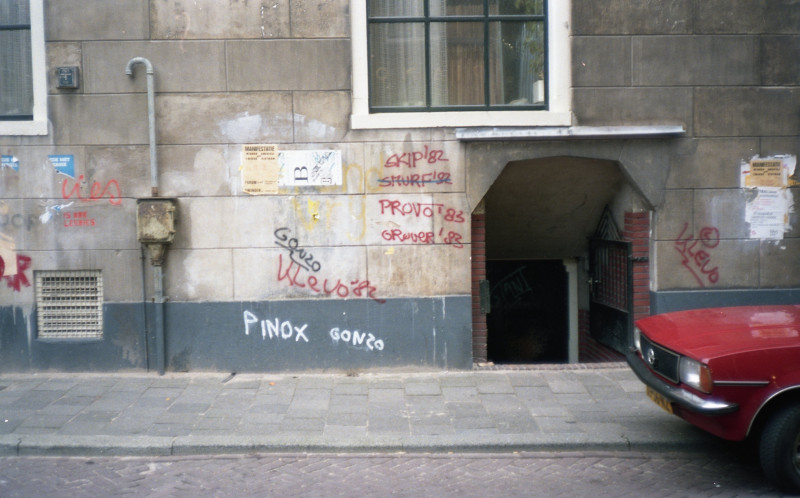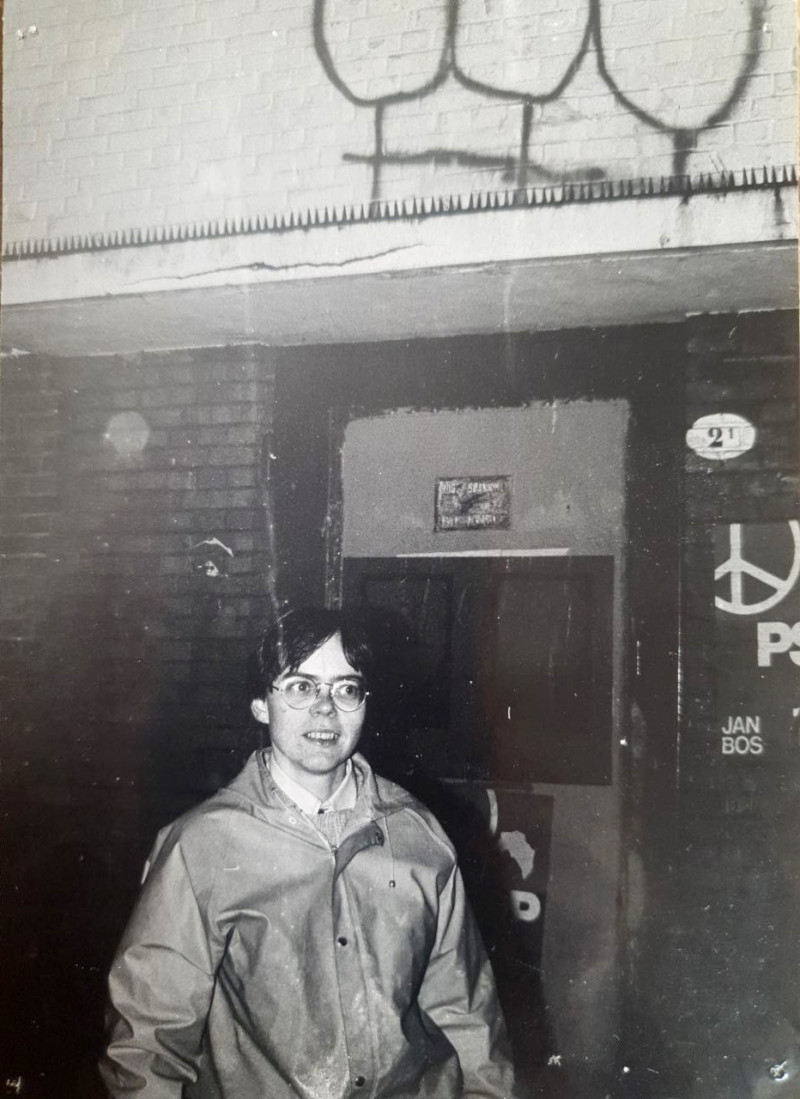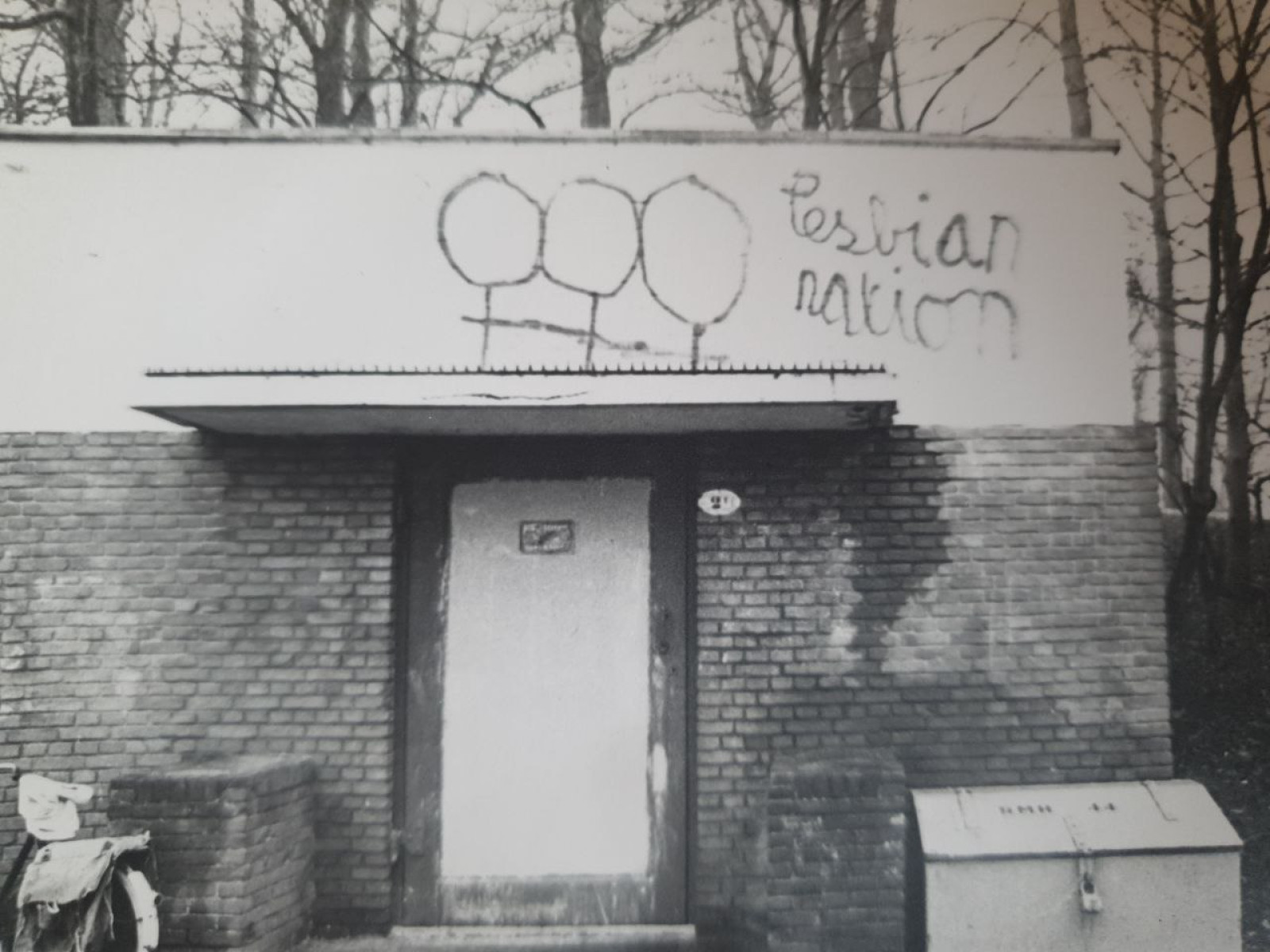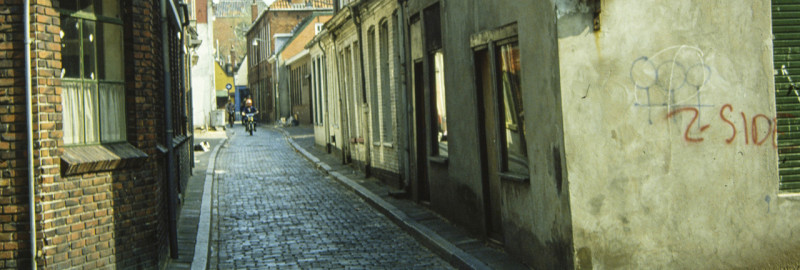
Lesbian graffiti
Anyone who looks through Kladmuur's extensive graffiti archive, and pays close attention, might notice it: Among the repetitive tags you will also find lesbian slogans and symbols. Who were these women who took brush and spray can in hand to spread “potty consciousness”?
To get some idea of the different queer (1) groups in Groningen in the '70s and '80s, it is important to know that gay men and gay women at that time did not face exactly the same struggles. At the COC, women had always been underrepresented, so as they, influenced by the Second Feminist wave, became increasingly aware of their oppression as women, it was a logical step to establish groups of their own. But also gay men who found the COC too well behaved, too serious and too bourgeois, founded their own groups. These radical queers appropriated the swear names “pots” and “faggots,” and wore them with pride. (2)
The women's movement that emerged in the Netherlands in the late 1960s, early 1970s, consisted of all kinds of women's initiatives along with talking and action groups, where women could be themselves without men around. For example, starting in 1971 in Amsterdam’s Vrouwenpraatgroep Purperen Mien, which challenged the COC on the favoring men, but also criticized feminist groups for their focus on hetero issues. Purperen Mien later became known as the radical Purple September. According to this action group, complete independence from men was a political choice, and homosexuality with it. “You don't go to bed with the oppresor.” (3)
Almost simultaneously with the creation of Purple Mien, another (talking) group came into being: Group 7152. Under that number, a contact ad for lesbian women was placed in Vrij Netherlands through which many lesbian women found each other (and themselves). (4) In Groningen there was a Group 7152, where lesbian women got to know each other in the early 1970s. And from 1975 when the Women's House was opened, (5) that too was a place for lesbians to meet each other, for example at the lesbian discussion group held there. Through these meeting places, lesbians created a basis for a movement of their own. (6)
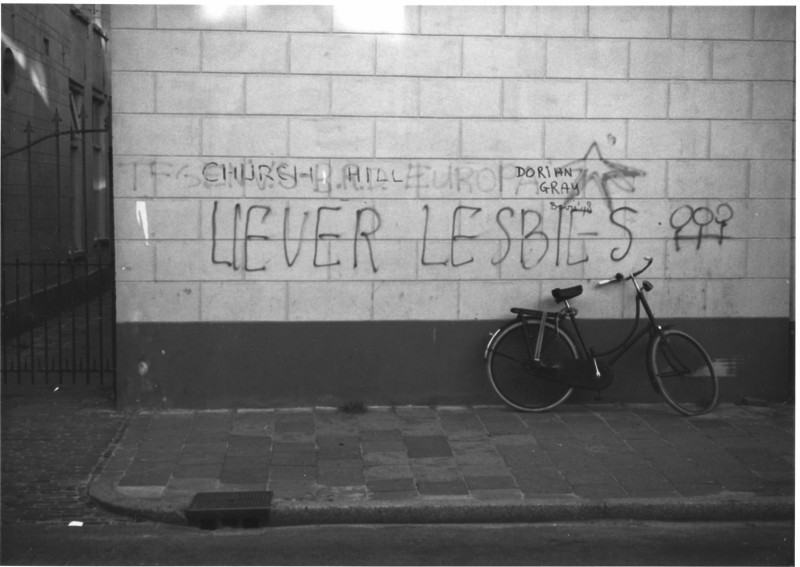
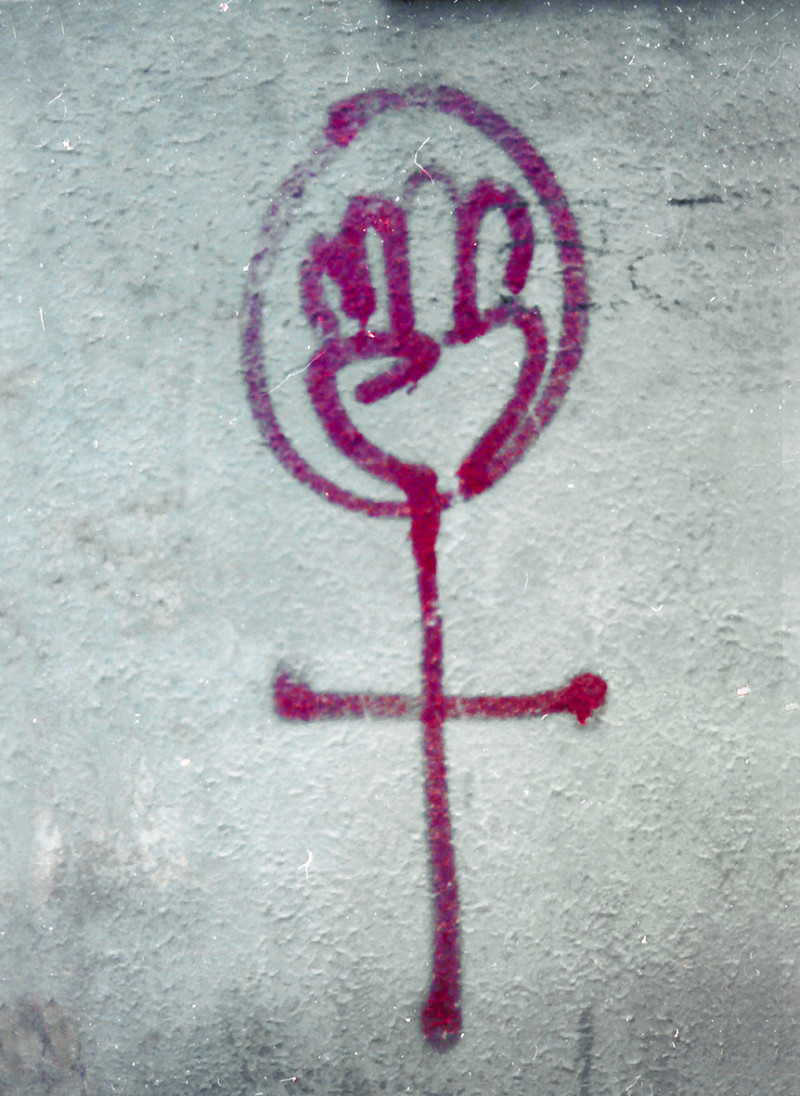

In 1977, the anarchist organization Lesbian Movement Groningen was founded.(7) They were not as radical as Purple September, where bisexual women are not welcome (“you don't go to bed with the oppressor”), and adopt the slightly milder and more playful “all women are lesbians, except those who don't know it yet”.(8) This group founded the first women's bookstore and the first women's café in Groningen “Dikke Trui,” both opened in 1979.
That same year also saw the release of the first lesbian novel in the bouquet series “Wild Roses’’, a series about lesbian adventures in the city of Groningen. These were written by Damesschrijfbrigade DORCAS, or Marianne Gossije, Marlite Halbertsma, Hanneke Dantuma and Margriet ter Steege. When I ask around about which of the women from the Lesbian Movement were engaged in graffiti, I was referred to the latter, Margriet ter Steege.
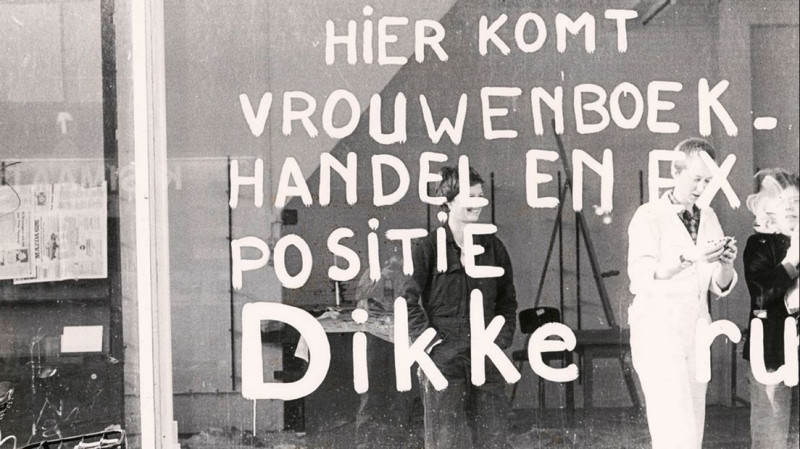

“Such a gentleman lived there, we messed up that place”
At Margriet's home it soon came up that the slogan Groningana Lesbiana is hers. From this writing was once made into a painting that now hangs on Margriet's wall. Through the women's group of the COC in the early 1970s, Margriet met many other lesbians in Groningen. These women also often went to the weekly women's nights in gay bars. For some groups, acceptance was an important goal. Margriet: “Well for a very long time I really hated the word 'acceptance.' I don't need to be accepted. Well I am a lesbian, and I will enjoy it. And make sure we are visible. Hence why we went into town with a spray can.”(9) Spraying slogans throughout the city, Margiet also did so with non-lesbian women from the Women's Movement. There, all kinds of different themes came up: expressions about the abortion rights struggle, actions against exploitation of women, and the occasional lesbian slogans in between.(10) For example, Margriet talks about an action from the abortion struggle upon which a scene from “Wild Roses” is based. Some VVD senators had blocked the abortion bill, so they drove with a few women in the middle of the night to Ulrum, “There lived this gentleman, so we then chalked the place up”.(11)
Margriet explains that her handwriting has never been been fantastic, and that it didn't improve with a spray can. Another action involved the gluing and daubing of sex shops against female exploitation. In doing so, Margriet wanted to spray “rejected” (afgekeurd) on the window, but she forgot the “u” and the big “CANCELLED” spelled ‘afgekerd’, which still plagues her to this day.(12) The back of this photo reads: “For our Neerlandica”.
We talked further about the various lesbian slogans you could encounter in Groningen. The text “Rather Lesbies” was in many places. There was also an advertising slogan of a butchers at that time, “Meat madam, you know why,” which was adapted to “Lesbies madam, you know why”.(13)
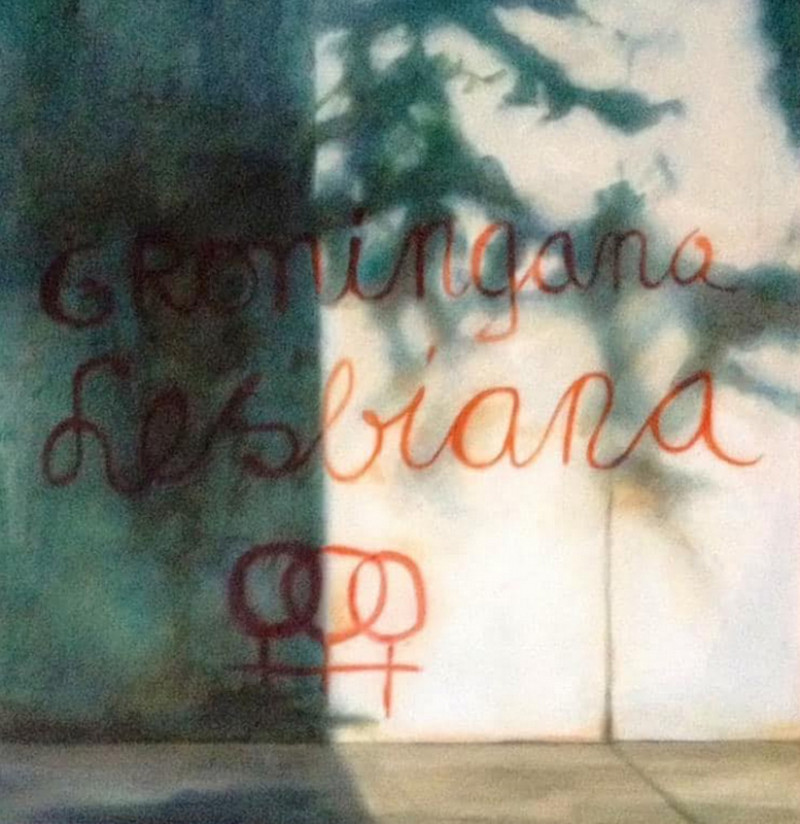
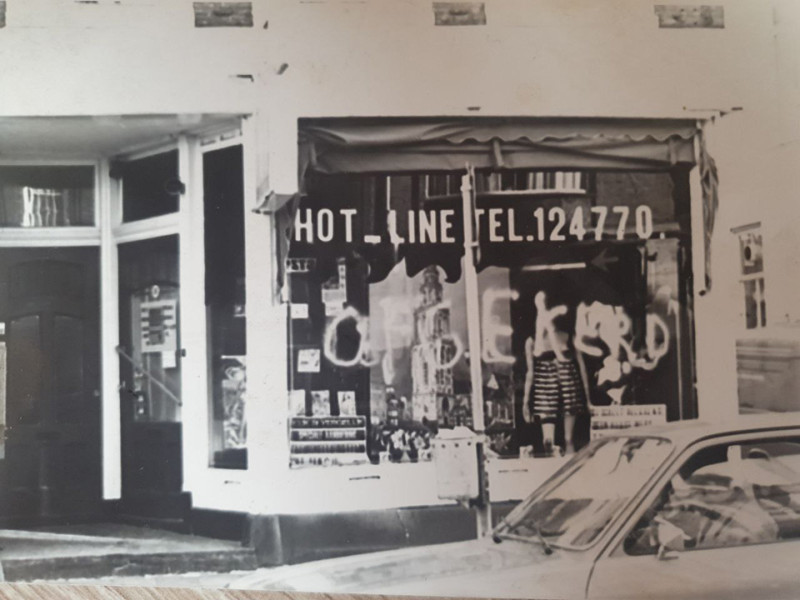
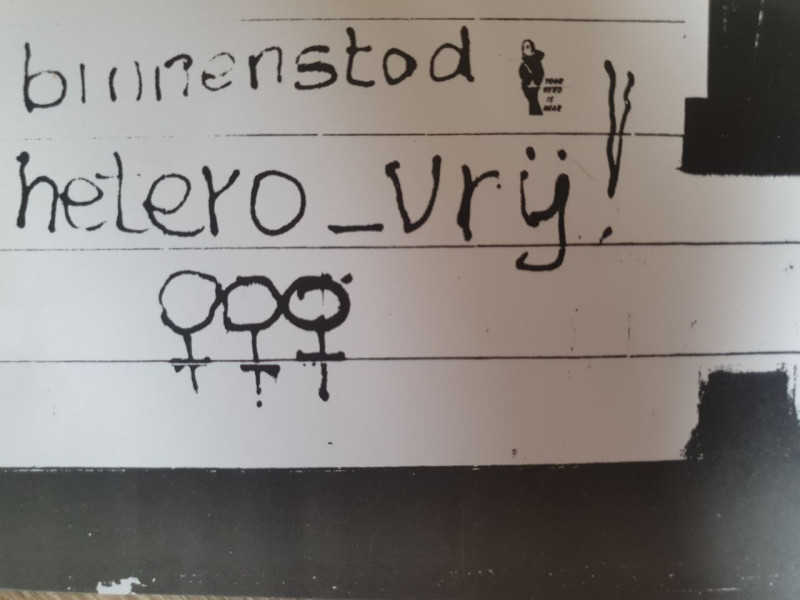
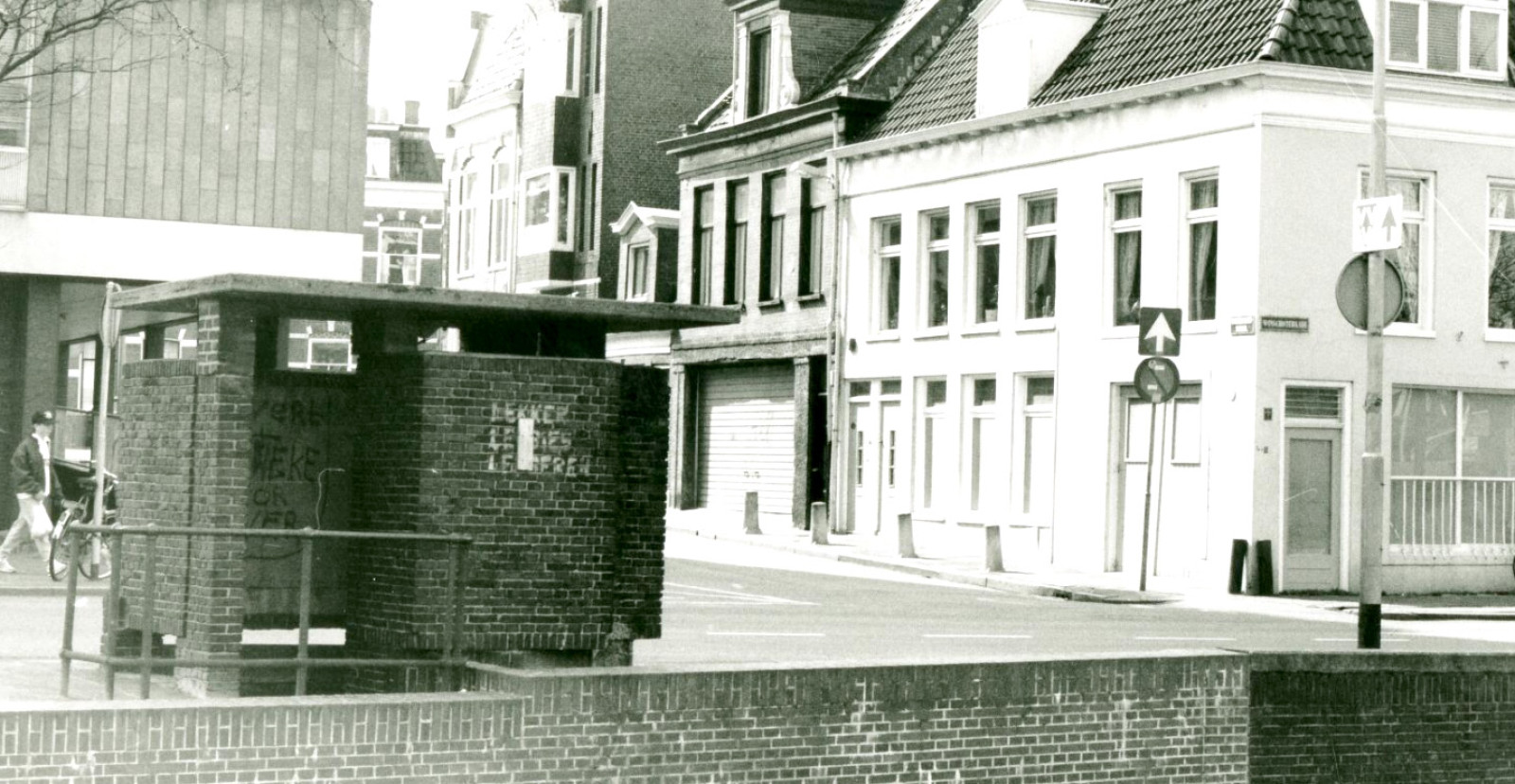
“Tasty lesbian licking” is emphatically not by Margriet, which she wants to make perfectly clear. “I find it an extremely vulgar way of expressing oneself.”(14) We began the conversation with Groningana Lesbiana, a well-known text by Margriet in the Kreupelstraat, finished with a piece of graffiti on the electricity booth in the Noorderplantsoen, which Margriet still proudly calls “my little house.” It was a tough spot to climb. She wrote the text “Lesbian Nation” there, which in those years was used by several lesbian initiatives and which came from the book “The Feminist Solution” by Jill Johnston. After writing that text, she once received a photo of it, with the writing on the back saying, “Keep up the good work! - Your fans”.(15)
